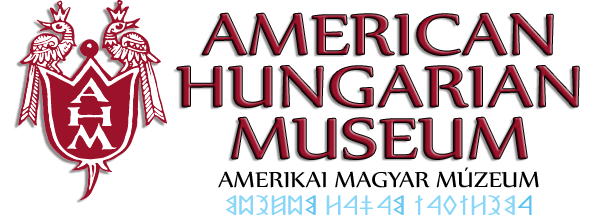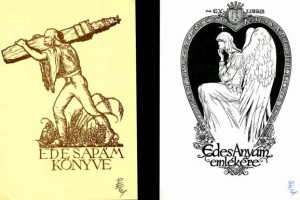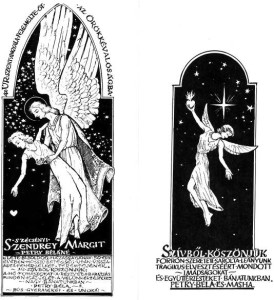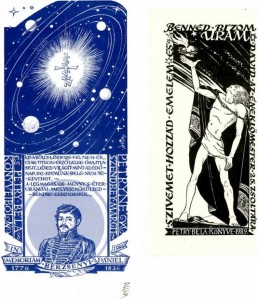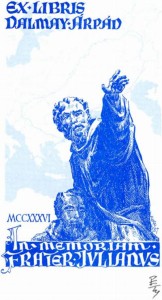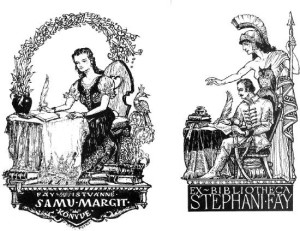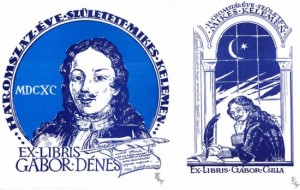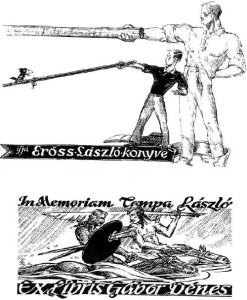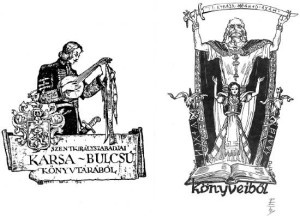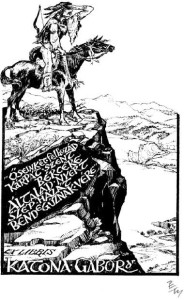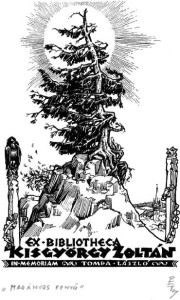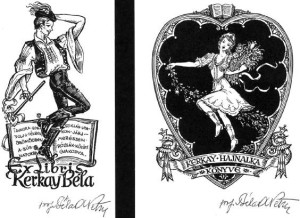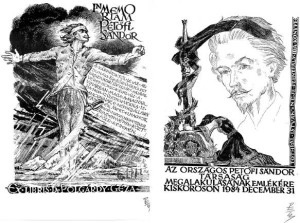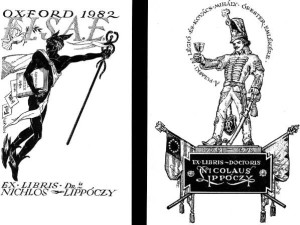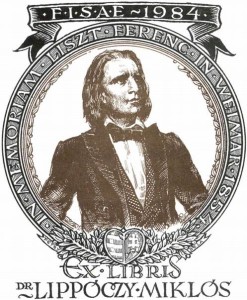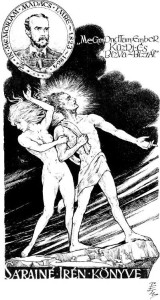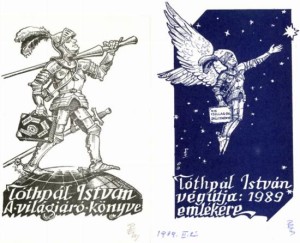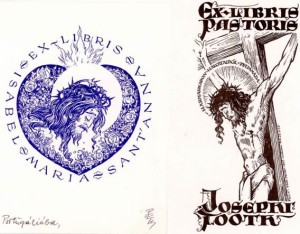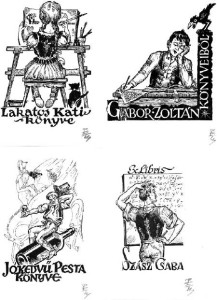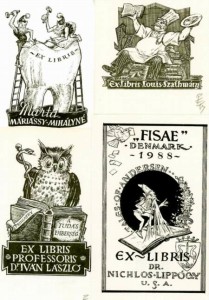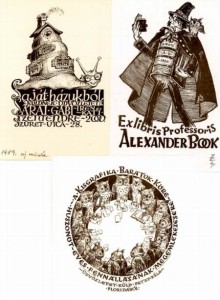DR. BRAGANCA ON PROFESSOR PETRY
AN EXAMPLE OF ACHIEVEMENT IN THE ART OF THE BOOKPLATE (Excerpts)
by Dr. José Vicente de Bragança
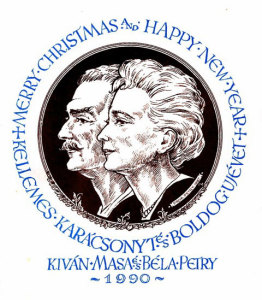
It is not an easy task to write about professor Petry’s work, since he has undertaken, throughout his life, a considerable range of artistic activities. Among these, we can mention those of professor of art and architecture, art designer, portrait painter, book illustrator, architect designer and last, but not least, of bookplate artist.
….
Amidst the lack of good taste to which we are exposed by some modern artists in the bookplate field, it is quite a source of spiritual comfort to admire Petry’s bookplates. They show strength, vitality, personality, and most of all they add evidence of a natural creative talent. Petry’s exlibris are simple in conception, correct in their lines and yet, meticulously worked to the last and smallest detail.
In some of Petry’s bookplates of the earlier period (1920’s, 1930’s), we find sometimes a graphic style much closer to the currents which dominated the artistic tendencies of the beginning of our century – the so-called “Liberty” or “Modern” style. Also, Petry’s design demonstrates a great and major influence of the Magyar Folklore and of Hungary’s Historical traditions, – so rich in cultural influence, rustic and yet so powerful in significance. Another feature, particularly pleasant and outstanding, in this artist’s bookplates is the lettering – so often disregarded by modern artists who, lacking technique and skill, choose the simplest path by adopting mechanical, ready-made lettering types in their Exlibris. Fortunately, for bookplate-lovers, professor Petry cultivates the difficult and precious art of lettering.
But when appraising Petry’s bookplates what we like most is the classicism of his drawing which runs throughout time indifferent to fashion and to every-changing styles. The real dimension of his drawing can indeed be found in its simplicity and in its universal aesthetic message. Plants and animals are frequent motives in his bookplate designs, showing a complete mastery in the difficult art of drawing from nature. Special attention must be paid to the bookplates made for Doctor Gottenhuber Henrik (with a beautiful fish suspended from the typical Manor-House), Nagy István Eger (with a vine tree on an enclosed book) and the one executed for Emőke Ilona Petry – the artist’s own daughter. Very curious, and original too, is the bookplate designed in 1981 for Engineer Kennuth Gramolini representing an owl standing on a computer desk while reading an electronics manual. We think it is a perfect example of the balance which professor Petry obtains in his creations.
Notwithstanding, if asked to specify Petry’s best accomplishment in drawing bookplates, we would, without any hesitation, speak of his excellent faces. Again, in a very classic manner, Petry achieves much expressive power in his faces. His love for archeology and his designing skill are also well illustrated. As an architect, professor Petry has designed numerous churches (e.g. St. Augustine Church, in Florida), Shrines (The National Maria Shrine in Washington, D.C.), besides libraries and schools. Thus, professor Petry is accomplished in numerous arts, having dedicated all his adult life to artistic creation in the various fields in which he is an expert.
He is an example of a full artist who does not disdain the noble art of the miniature design and engraving.
Professor Petry’s bookplates are a display of Harmonious forms and of good drawing made with a skilled and firm hand. Furthermore, his creations do not betray the true spirit and purpose of the bookplate. Created to be stuck in a book denoting ownership and enriching it with a manifestation of art, the bookplate – to be a real one – must portrait this requirement. Otherwise, as it happens quite often today, it ceases to be a bookplate as such to become a mere, however beautiful, meaningless miniature design with a given inscription on it. No matter how much this may perturb greedy collectors who gather “bookplates” as they might collect bottle corks, the real Ex Libris will always be associated with books and the bibliophiles who own them.
The exlibris created by professor Béla Petry perform these duties in a proper manner. His creations are not hurried pieces destined to an anonymous owner whose name will be added after selection. On the very contrary, they are the happy wedding between the owner’s ideas and the artist’s interpretation. For all that has been said previously, Ex Libris lovers and collectors ought to congratulate themselves for the opportunity it was given to reveal professor Petry’s great talent and mastery in this field of the graphic arts which we all love.
Let his work – with its deep human message and its artistic quality – be an example and a stimulus to young bookplate artists.
Cascais, Portugal, 1981
(Arte do EX LIBRIS No: 96, Volume XII, 1981. – Portugal)
